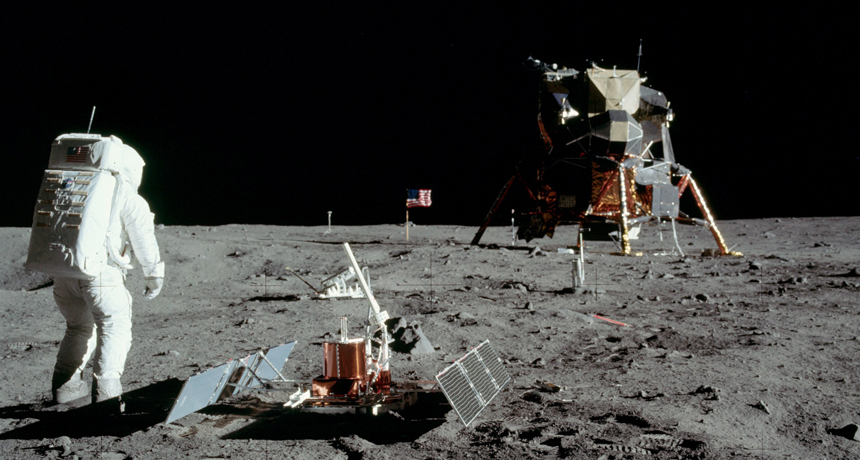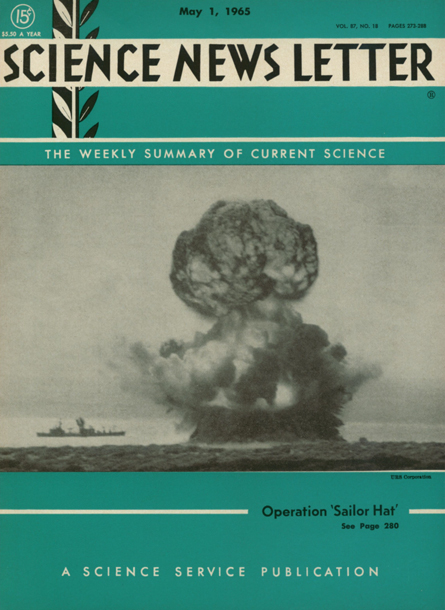Before moon landings, scientists thought dust or crust might disrupt touchdown
Excerpt from the May 1, 1965, issue of Science News Letter

STICK THE LANDING Despite worries that dust might swallow their lunar spacecraft, Buzz Aldrin (pictured above) and Neil Armstrong safely landed and explored the moon's surface during the Apollo 11 mission.
NASA
 Moon surface safe? — Both the unmanned Surveyor spacecraft and the two-man Lunar Excursion Module (LEM) will be able to land safely on the moon without breaking through the crust or sinking down out of sight in a layer of dust, some scientists now believe.…
Moon surface safe? — Both the unmanned Surveyor spacecraft and the two-man Lunar Excursion Module (LEM) will be able to land safely on the moon without breaking through the crust or sinking down out of sight in a layer of dust, some scientists now believe.…